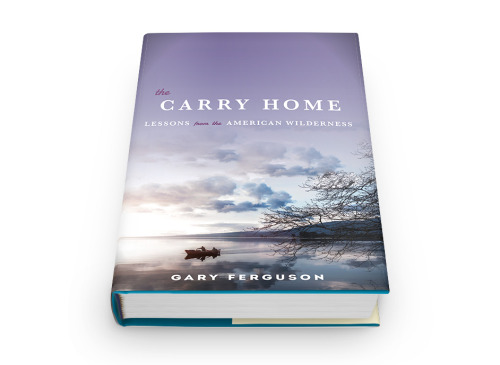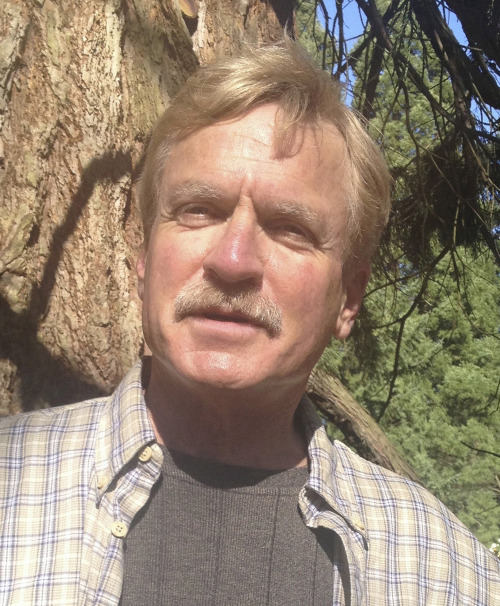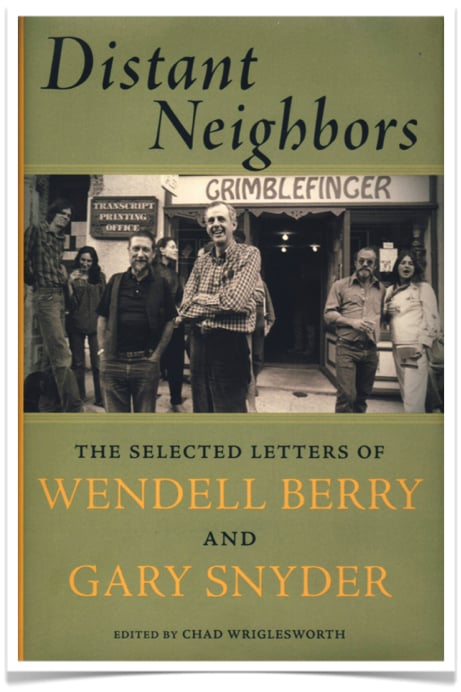Book reviews: New titles from Gary Snyder, Wendell Berry & Gary Ferguson

Editor’s note: Gary Ferguson teaches a Nature Writing Workshop for the Chuckanut Writers program at WCC on Nov 18, 9:30-4:30, $75. Co-presented by North Cascades Institute, Ferguson will instruct how to blend natural world, memoir, myths and archetypes in to your own story. More information at www.ncascades.org/signup/programs/nature-writing-workshop-with-gary-ferguson; register at www.whatcomcommunityed.com or by calling (360) 383-3200. Ferguson’s workshop will be followed by a free public reading at Village Books at 7 pm for his new book, The Carry Home. Info at http://www.villagebooks.com/event/gary-ferguson-11/18/14.
By Christian Martin
Gary Ferguson has been a voice for the wilderness for the past 25 years. His steady, sturdy prose has translated the power of wild places in to 22 nonfiction titles like Hawk’s Rest, The Yellowstone Wolves, The Great Divide and Walking Down the Wild.
Combining lyrical images, scientific research and hard-won, first-hand experiences, Ferguson has shown readers how the untamed natural world challenges, informs, inspires and awes us.
In his latest book, The Carry Home: Lessons from the American Wilderness from Counterpoint Press, Ferguson explores another dimension of the power of wild places: healing.

The Carry Home chronicles Ferguson’s quest to scatter his wife Jane’s ashes in several locations that she specified: the Sawtooth Mountains of Idaho, near a Forest Service cabin in southern Montana, a remote corner of Capitol Reef National Park in Utah, the Lamar Valley in Yellowstone and Wyoming’s Absaroka Range.
It is one last adventure in the Great Outdoors for the couple, married for 25 years and bonded through their shared love of exploring, hiking, canoeing and roadtripping (they put 350,000 miles on a 1979 Chevy van).
Ferguson invites us to join him on this intimate journey, and as the tale unfolds, we witness the healing balm that nature provides.
“At first, the journeys broke my heart,” he writes. “Later they helped me to piece it together again.”
Ferguson’s books have excelled at telling other peoples’ stories, like wildlife biologists studying grey wolves or troubled teens in a wilderness therapy program. The Carry Home turns the author’s focus on himself, and his chronicle of grief is unstinting and raw, deftly avoiding maudlin and over-sentimental prose. The reader travels alongside Ferguson — riding shotgun in the Chevy, hiking trails, paddling rivers — as he revisits hallowed ground and meditates on love, wild places and how both came to be braided together in the story of their marriage.

Also new from Counterpoint Press…..
Distant Neighbors: The Selected Letters of Wendell Berry and Gary Snyder
This record of a 40-year correspondence between two of our nation’s greatest poets and intellectuals is a testament to friendship, good manners and the lost art of letter writing. Distant Neighbors shares many of the 240 letters the two writers exchanged between 1973-2013.
In their missives, they discuss everything from local weather to opinions on religion and faith, constructive criticism on each other’s poems to experiments in homesteading.
Berry is a 3rd generation farmer in Kentucky, born and raised with Christian values, who has made the exploration and revitalized practice of traditional, agrarian values his life’s work.
Snyder, on the other hand, is a Zen Buddhist who has lived off the grid in the foothills of the Sierra Nevada since the early 1970s. His interests have ranged from Chinese environmental history to Native American mythology to Neolithic lifeways.
Their letters demonstrate how people from disparate backgrounds can have differing opinions and lifestyles, yet find productive common ground by remaining open-minded, respectful and resilient. The poets’ congeniality is striking in this highly polarized age, when opposing sides try to settle arguments by seeing who can shout the loudest.
Berry and Snyder are arguably responsible for bringing concepts like Deep Ecology, the importance of sustainable agriculture and local economics and “watershed thinking” in to our society’s consciousness. Through their poems, essays, interviews, teachings and lectures, they planted seeds that would later bear fruit in the “back to the land” movement of the ‘60s, landmark environmental legislation in the ‘70s and today’s focus on sustainability, green power, permaculture and Slow Food. So it is of great interest to witness the two unfettered minds working over these various concepts through their decades-long correspondence: offering hypothesis, sharing research, testing ideas, challenging presumptions.
And always, in conclusion, asking after each other’s families, reporting on what birds they recently observed at the feeder and a courteous bow of friendship.

